Introduction
The newly created Integrated Applications Promotion (IAP) programme of the European Space Agency (ESA) is inviting public and commercial end-user organisations to propose ideas and suggestions for new services in the Baltic, focusing particularly on maritime issues. The aim is to generate ideas leading to new services that will improve business performance and operations, help enforce new regulatory standards (for instance on environmental protection), or enable improved marine safety and security.
The ideas will be used to help define and consolidate requirements for user-driven services supported through the IAP. At this stage, we are primarily interested in user requirements rather than in technical solutions.
The IAP initiative on the Baltic is planned as the first of a number of such initiatives that we wish to undertake on a European regional basis. It is intended that the strategy for this initiative be closely aligned with that of other programmes on the Baltic such as BONUS, HELCOM and BOOS.
Call for User Ideas
The Call for User Ideas on the Baltic follows directly from a workshop on .Information and Communication Technology (ICT) Services for Environment, Safety and Security in the Baltic Sea. which was held in Helsinki on 12th April, 2010. The workshop was jointly organised by BONUS EEIG (representing 9 research funding agencies around the Baltic), TEKES (the Finnish Funding Agency for Technology and Innovation) and ESA.
Themes arising from the workshop (and also from the adjoining Northern Maritime Challenge workshop organised by the Centre for Maritime Studies at the University of Turku on .Challenges in Baltic Sea Transports, Safety and the Environment.) that it is intended to cover in this Call for User Ideas include (but are not restricted to):
- Environmental Monitoring (e.g. monitoring of oil spills and algae .matts., coastal protection).
- Safety and Security (e.g. monitoring / optimisation of vessel traffic, border security, search and rescue).
- Energy (e.g. operation of offshore wind farms and sail boats; laying of underwater pipelines).
- Fisheries (e.g. management of trawlers and fish-stocks, marketing service).
- Port handling (e.g. tracking of containers).
Planned Call for Proposals
As result of the received response to the Call for User Ideas, ESA intends to initiate a set of IAP activities in partnership with other relevant stakeholders. In particular, it is planned to publish an Open Call for Proposals on the Baltic in December 2010. The Open Call will address Feasibility Studies (see below), though more fully developed ideas could also be considered directly for Demonstration Projects. The most promising Feasibility Studies on the Baltic would be taken forward as IAP Demonstration Projects in the second half of 2012.
The Baltic Sea Region
The Baltic Sea region is ecologically unique, and cannot be monitored or controlled purely on a national basis. It is characterised by a very long water residence time (25 - 35 years), a large salinity range (from 23 . in the Danish Straits to approximately 2-3 . in the easternmost Gulf of Finland and northernmost Gulf of Bothnia), and has essentially no tide. Due to the exceptional salinity conditions, the Baltic Sea is characterised by low species diversity of freshwater and marine origin, and has a simplified food web.
The Baltic Sea is of considerable strategic and economic importance in energy supply from Russia to the EU, supporting the transportation of oil and gas. It is also highly congested, with over 2000 vessels trafficking the Baltic at any one time. Land uplift is still an ongoing process along coastal areas (particularly in northern parts of the Baltic), requiring frequent dredging of shipping lanes. Eutrophication is also a major problem, due largely to excessive run-off from fertilisers. The Baltic Sea is seasonally affected by ice cover which requires a fleet of ice-breakers to maintain the shipping routes in the winter.
The IAP Programme
The IAP programme aims at developing a range of new applications by using and integrating different space assets (Earth Observation, Navigation and Telecommunications), resulting in sustainable services for the benefit of society ensured by the user-driven nature of the IAP programme. New concepts, capabilities and a new culture are required in order to respond to a multitude of needs from users who are not familiar with space systems, and this Call for User Ideas is targeted especially at such users.
ESA is in the process of initiating discussions with stakeholders and end users, and bringing them together with the space industry and service providers, with the aim of assisting in the development of end-to-end technical solutions through two types of studies:
- Feasibility Studies, which provide the preparatory framework to identify, analyse and define new user-driven sustainable services.
- Demonstration Projects, which aim at establishing the basis for sustainable integrated applications. Demonstration Projects are carried out on the basis of partnership with ESA, and have the ultimate goal of validating the technical and economic viability of the proposed solution.
Feasibility Studies in Open Competition can be supported by ESA up to a level of 100%, and Demonstration Projects up to 50%. Some examples of ongoing IAP projects, and more information on the IAP programme, can be found on the ARTES Applications portal at http://artes-apps.esa.int.
How to submit your ideas
You are invited to submit your ideas and suggestions by completing and returning the attached form by email to iap@esa.int (putting .Baltic Call. in the subject heading).
The User Response Form can be downloaded below.
Please be assured that all inputs will be treated confidentially. Your ideas are highly valued, and will help shape the IAP programme of ESA in order to meet your needs.
For any questions related to this Call for User Ideas, please contact:
Dr Tony Sephton (TIA-AFA)
ESA-ESTEC
Keplerlaan 1, 2200AG Noordwijk
Netherlands
Email: tony.sephton@esa.int
Tel:+31-71-56-55554
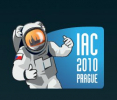 The International Astronautical Congress will open in Prague on 27 September. Joining the worldâs major space players, ESA will participate with experts in a rich and varied programme. The conference program also includes sessions dedicated to the Integrated Applications domain. ESA-IAP will contribute with papers and presentations about the findings of the IAP program as well as with the recent outcomes of some IAP projects.
The International Astronautical Congress will open in Prague on 27 September. Joining the worldâs major space players, ESA will participate with experts in a rich and varied programme. The conference program also includes sessions dedicated to the Integrated Applications domain. ESA-IAP will contribute with papers and presentations about the findings of the IAP program as well as with the recent outcomes of some IAP projects.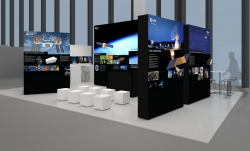



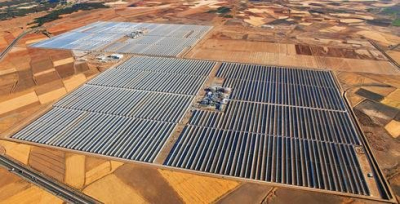
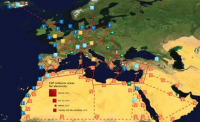 As an example, Dr. Gerhard Knies, chairman of the Supervisory Board of the
As an example, Dr. Gerhard Knies, chairman of the Supervisory Board of the 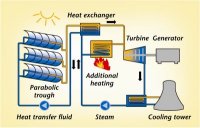
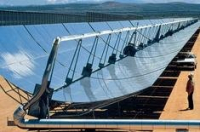 - âThe technology is based on the concentration of direct solar radiation using parabolic-shaped mirrors.â says Benedikt Pulvermüller, project manager at Solar Millennium AG. The heat is collected in an absorber tube filled with a heat-transfer fluid.The heat is used to generate steam which is used to run a turbine and to produce electricity as in many other conventional power plants, like coal or gas. The rationale behind this approach is that heat can be easily stored and later used to generate additional steam, particularly during cloudy periods or even at nightâ
- âThe technology is based on the concentration of direct solar radiation using parabolic-shaped mirrors.â says Benedikt Pulvermüller, project manager at Solar Millennium AG. The heat is collected in an absorber tube filled with a heat-transfer fluid.The heat is used to generate steam which is used to run a turbine and to produce electricity as in many other conventional power plants, like coal or gas. The rationale behind this approach is that heat can be easily stored and later used to generate additional steam, particularly during cloudy periods or even at nightâ
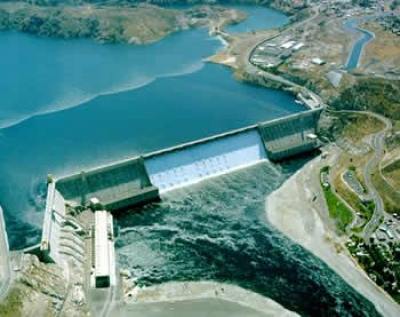
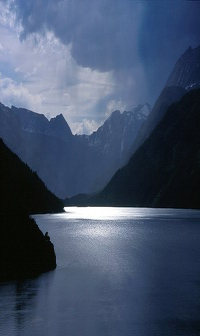 INTOGENER (INTegration of EO data and GNSS-R signals for ENERgy applications) focuses in the case of Chile. ENDESA, a Spanish utility owned mostly by the Italian Enel Group is de facto the largest utility in South America, being Chile one of the markets they operate. In Chile, more than 40 % of the national electricity mix comes from hydroelectricity power plants, being most of them located in the central area of the country. For the management of the power plants, all the utilities use currently a statistical model of the region. It is based on a limited set of in-situ measurements as well as previous yearsâ meteorological and hydrological information. The accuracy of the outcomes of this model differs up to 60 % with respect to reality. ENDESA is willing to find an alternative that can help them to manage their power plants in a more efficient way. Over the past decade, the electricity demand in Chile has grown at an average rate of 7 % per year, making mandatory an optimisation of the hydroelectrical resources in the short term to avoid further investment in fossil sources to fill the demand.
INTOGENER (INTegration of EO data and GNSS-R signals for ENERgy applications) focuses in the case of Chile. ENDESA, a Spanish utility owned mostly by the Italian Enel Group is de facto the largest utility in South America, being Chile one of the markets they operate. In Chile, more than 40 % of the national electricity mix comes from hydroelectricity power plants, being most of them located in the central area of the country. For the management of the power plants, all the utilities use currently a statistical model of the region. It is based on a limited set of in-situ measurements as well as previous yearsâ meteorological and hydrological information. The accuracy of the outcomes of this model differs up to 60 % with respect to reality. ENDESA is willing to find an alternative that can help them to manage their power plants in a more efficient way. Over the past decade, the electricity demand in Chile has grown at an average rate of 7 % per year, making mandatory an optimisation of the hydroelectrical resources in the short term to avoid further investment in fossil sources to fill the demand.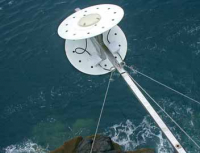

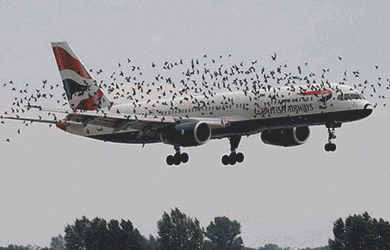
 Natural selection has taught birds to wait until the very last moment to turn in order to avoid predators. This has to be done in this way, because if they move before, predators will be still able to turn and catch them. Nowadays, as planes are becoming faster and more silent, birds, perceiving planes as possible predators, do not really have enough time to turn, and therefore, got struck by aircraf
Natural selection has taught birds to wait until the very last moment to turn in order to avoid predators. This has to be done in this way, because if they move before, predators will be still able to turn and catch them. Nowadays, as planes are becoming faster and more silent, birds, perceiving planes as possible predators, do not really have enough time to turn, and therefore, got struck by aircraf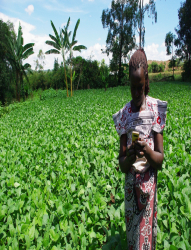
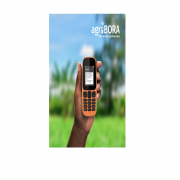 When talking about Civil Aviation we have to take into consideration liability issues, reports a specialised lawyer. For example, an airport operator's liability is usually dependant on the claimant proving the airport was at fault. In case of accident, passengers are going to make claims against airlines, and these are going to make claims against airport operators.
When talking about Civil Aviation we have to take into consideration liability issues, reports a specialised lawyer. For example, an airport operator's liability is usually dependant on the claimant proving the airport was at fault. In case of accident, passengers are going to make claims against airlines, and these are going to make claims against airport operators.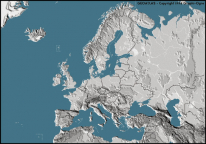 IAP is pleased to announce the starting up of the
IAP is pleased to announce the starting up of the 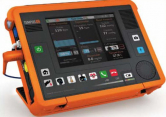 Etihad Airways will install new state-of-the-art technology on its long and ultra long haul aircraft which can monitor the condition of passengers who display signs of sickness that might require immediate medical attention.
Etihad Airways will install new state-of-the-art technology on its long and ultra long haul aircraft which can monitor the condition of passengers who display signs of sickness that might require immediate medical attention.